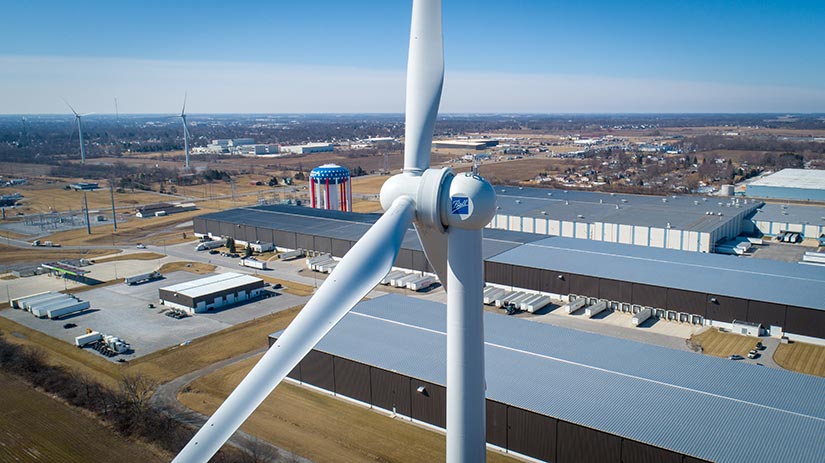Introducing the 2022 Electricity Annual Technology Baseline
What You Need To Know About This Year’s Annual Technology Baseline, Including Distributed Wind and Pumped Storage Hydropower Supply Curve Data for the First Time

The 2022 Electricity Annual Technology Baseline (ATB) is now available, including distributed wind and pumped storage hydropower supply curve data for the first time.
The ATB integrates current and projected cost and performance data for electricity-generation and storage technologies into one user-friendly format. The data is freely available to the public.
The Electricity ATB is a collaborative project led by the U.S. Department of Energy’s (DOE’s) National Renewable Energy Laboratory (NREL) with Oak Ridge National Laboratory, DOE's Office of Energy Efficiency and Renewable Energy, and DOE's Office of Fossil Energy and Carbon Management. Products included in the ATB incorporate analysis from a variety of published reports.
The ATB was first developed in 2015 to ensure consistent and timely assumptions across energy analysis studies, as clean energy costs were declining. Every year, the ATB is updated and released to include updates and new data on additional electricity-generation and storage technologies. The ATB has had over 86,000 users from 144 countries to date.
"More and more energy analyses rely on data and modeling tools to answer new questions about the evolving power system," said Laura Vimmerstedt, ATB project lead at NREL. "The ATB provides energy analysts, modelers, and system planners with consistent and reliable data to help them conduct forward-looking scenario analyses."
ATB data is widely used, including in NREL's annual Standard Scenarios that explore possible pathways for U.S. electric sector evolution over time. Other NREL studies have used the Standard Scenarios to examine specific futures, including the Storage Futures Study and Los Angeles 100% Renewable Energy Study, NREL's partnership with the Los Angeles Department of Water and Power to explore the costs of reaching 100% renewable electricity.
Data Changes for 2022
For the first time, the 2022 Electricity ATB includes distributed wind and pumped storage hydropower supply curve data, along with the annual cost and performance updates to all technologies.
Distributed wind data is from NREL’s recent Distributed Wind Energy Futures Study—a highly detailed, comprehensive analysis of opportunities for widespread U.S. deployment of distributed wind in 2035. The study found distributed wind has economic potential of nearly 1,400 gigawatts, today—or more than half of current U.S. annual electricity consumption.
Pumped storage hydropower data is from the first comprehensive resource assessment of U.S. closed-loop pumped storage hydropower—a three-year effort conducted by NREL with funding from DOE. Pumped storage hydropower accounts for nearly 95% of U.S. energy storage capacity, but it has been difficult to model how many new systems are feasible or where they could be built because they are generally located far from electricity demand. NREL's new national pumped storage hydropower resource potential data set applies land use and cost filters—showing tens of thousands of potential U.S. pumped storage hydropower systems with several terawatts of generation capacity.
"We're excited to include distributed wind and pumped storage hydropower for the first time in this year's ATB," Vimmerstedt said. "To achieve U.S. federal targets of 100% clean electricity in 2035 and a net-zero carbon economy in 2050, all forms of renewable power will be important to consider. By including these new technologies, we can answer more questions about potential pathways to transform the electric sector."
Key Products in the ATB Release
Every year, the Electricity ATB includes a suite of products to support energy modeling and analysis. An Excel spreadsheet documents detailed current and projected cost and performance data for electricity generation technologies. API and ATB Summary CSV files capture technology cost and performance in a computational and database-friendly format. Tableau workbook files provide access to original visualizations. The website provides in-depth documentation of the key products, including:
-
Details on historical trends, current estimates, and future projections of three primary cost and performance factors: capital expenditures, capacity factor, and operations and maintenance cost.
-
Documentation of the methodology and assumptions used to develop the projections of future cost and performance under conservative-, moderate-, and advanced technology innovation scenarios.
-
Discussion of the calculation of levelized cost of energy to illustrate the combined effects of the primary cost and performance factors, using two different sets of financing assumptions.
Join June 28 Webinar To Learn More
To discuss the analytical products included in the 2022 Electricity ATB in greater detail, join a free NREL webinar with the ATB team at 9–11 a.m. MT on Tuesday, June 28.
Last Updated May 28, 2025
